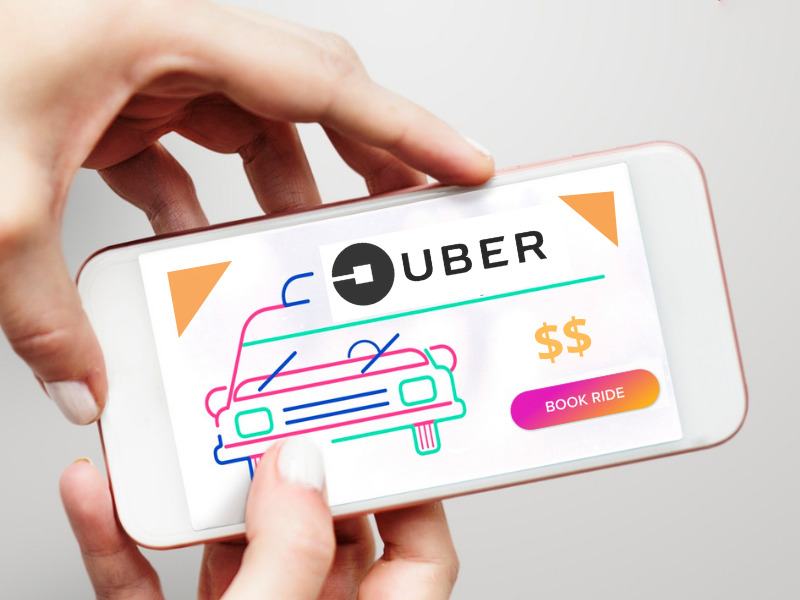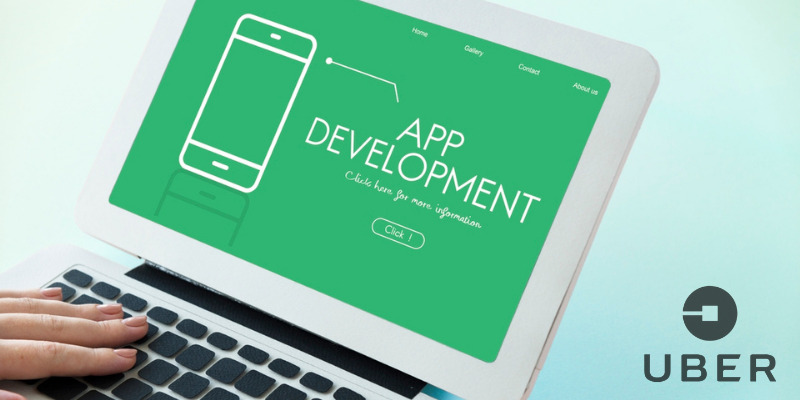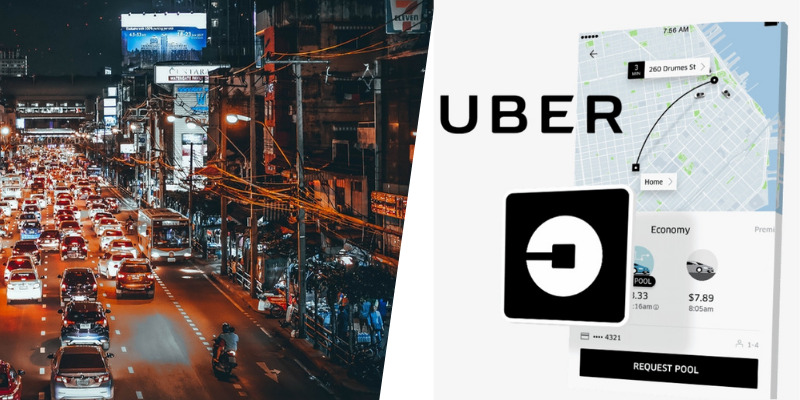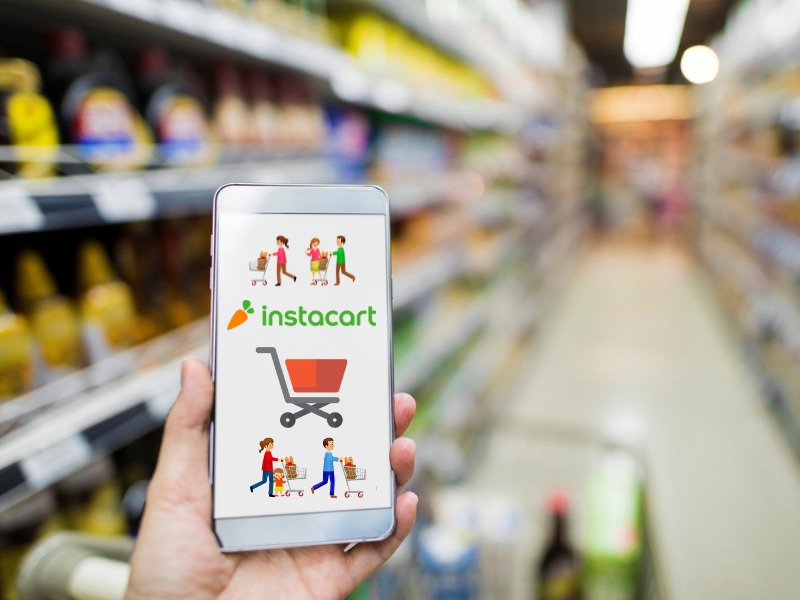How To Create An App Like Uber? Uber Business Model Explained

How Does Instacart Work? – Make Money As An Instacart Shopper
February 12, 2022
How Does Postmates Work? Business Model And Earning Revenue Explained
February 16, 2022Create An App Like Uber : Uber Technologies, Inc., commonly known as Uber, is an American company that offers vehicles for hire, food delivery, package delivery, couriers, freight transportation, and, through a partnership with Lime, electric bicycle and motorized scooter rental. Before analyzing the way to create an application like Uber, we need to understand and learn more about the app.
Table of Contents
It is a ride-hailing company that offers the Uber mobile app, which you can use to submit a trip request that is automatically sent to an Uber driver near to you, alerting the driver to your location. The accepting Uber driver will then come and pick you up and drive you to your requested destination. The Uber automatically finds out the navigational route for the driver, calculates the distance and fare, and transfers the payment to the driver from your selected payment method, without you having to say a word or grab your wallet. This is how Uber business model is designed for the users.
Unsurprisingly, Uber is the best taxi app on a global scale and is present in 600 cities across 65 countries. Even with competition from other similar taxi booking apps, the company is still the dominant player within the ridesharing market. Among other apps like Uber is Lyft, Curb, Easy Taxi, Gett, Summon, Flywheel, Grab (for Southeast Asia), DiDi (for Brazil, Mexico, Asian countries), and many others.
In recent years, the on-demand ride-hailing industry has witnessed a massive surge in popularity, with Uber leading the pack as a pioneer in this space. The success of Uber has inspired many entrepreneurs to create their own ride-hailing apps. If you’re one of them, you might be wondering how to create an app like Uber and what makes its business model so successful. In this article, we’ll explore the key elements of the Uber business model and guide you through the essential steps to develop your own ride-hailing app that has the potential to rank on the first page of Google.
Understanding the Uber Business Model:
Before diving into the development process, it’s crucial to comprehend the core aspects of the Uber business model that have contributed to its phenomenal success:
- User-Friendly Interface: Uber’s user interface is intuitive, making it easy for riders to book a ride with just a few taps on their smartphones. A seamless and hassle-free user experience is a cornerstone of the Uber business model.
- Real-time Tracking: Uber’s real-time tracking feature allows users to monitor their ride’s location and estimated arrival time. This transparency enhances user trust and satisfaction.
- Driver-Partner Model: Uber operates on a driver-partner model, allowing individuals with vehicles to sign up as drivers. This model provides flexibility to drivers and expands the availability of rides.
- Dynamic Pricing: Uber’s dynamic pricing model, also known as surge pricing, adjusts fares based on demand and supply, allowing the company to manage ride availability during peak hours.
- Cashless Transactions: Uber’s cashless payment system simplifies the payment process, ensuring a secure and convenient experience for users.
Steps to Create Your Own Ride-Hailing App:
Now that we’ve explored the key components of the Uber business model, let’s discuss the essential steps to create your own ride-hailing app:
Step 1: Market Research and Analysis
- Conduct thorough market research to identify your target audience, potential competitors, and regional market trends.
- Analyze user preferences and pain points to understand how you can differentiate your app from existing competitors.
Step 2: Define Your App’s Features
- Based on your market research, outline the essential features your app must have, such as ride booking, real-time tracking, payment integration, and user profiles.
Step 3: Choose the Right Technology Stack
- Select the appropriate technology stack for your app’s development, including programming languages, databases, and frameworks.
Step 4: Design User-friendly Interface
- Work with experienced UI/UX designers to create an intuitive and visually appealing user interface that enhances the overall user experience.
Step 5: Develop the App
- Partner with a reliable app development team or hire skilled developers to bring your app idea to life.
- Prioritize app security and data privacy to build trust with your users.
Step 6: Integrate Payment Gateways
- Collaborate with reputable payment gateway providers to enable secure and seamless cashless transactions within your app.
Step 7: Implement Real-Time Tracking
- Integrate GPS and mapping services to enable real-time tracking and accurate ETAs for users and drivers.
Step 8: Test and Refine
- Conduct rigorous testing to identify and fix any bugs or glitches in the app.
- Gather feedback from beta users to make necessary improvements and refinements.
Step 9: Launch and Market Your App
- Launch your app on app stores and promote it through various marketing channels, including social media, influencer marketing, and content marketing.
Step 10: Monitor and Improve
- Continuously monitor app performance and user feedback to identify areas for improvement and implement updates regularly.
By following these steps and incorporating the key elements of the Uber business model, you can create a ride-hailing app that not only provides a seamless user experience but also has the potential to rank on the first page of Google. Remember, building a successful app takes time and effort, so stay focused, be patient, and keep refining your app based on user feedback and market trends. With determination and innovation, you can create an app that stands out in the competitive ride-hailing industry, just like Uber did.
The Uber app includes 5 sub-steps which are important to clarify from the customer perspective. So, to get a better understanding when asking – how to make an app like Uber, let’s first examine the app functioning:
- Step one includes the Creation of a trip request with the end destination. The user can observe the upfront pricing of a trip’s fare, which is also based on vehicle type among Uber categories.
- Step two includes verification of the trip. The user confirms the data and the pickup location on the application.
- Step 3 includes matching up with the nearby available driver. On their end, a driver can accept or decline a request, this completely depends on the driver.
- Step 4 includes the payment process is done automatically in-app after the ride is complete. Beforehand, the user adds a credit or debit card, PayPal account, ties Android or Apple Pay, etc. Users may also change the default tip for the taxi service.
- Step 5 including rating is requested after each taxi ride and is a core component of Uber app business logic.
Uber app calculates the ride fares by combining time and distance indicators. If the vehicle is driving less than 11 mph (18km/h), the rider is charged per minute. If the car is moving faster, then the charge is per mile.
How much money does Uber make?
Since we’re talking about how to build Uber, we think you should know how much money this business earns.
You’ve probably heard that Uber has had some troubles becoming profitable in the U.S. Only this year did the company start to turn a profit. Uber takes a 25 percent commission per ride, but what it earns in profits is only $ 0.19 per ride on average. The rest goes to interest, taxes, and equity-based compensation for employees.
Most of the money earned by Uber goes to anti-fraud efforts, credit card processing, customer support, marketing, and software development. Even though Uber’s $66 billion valuation makes the company seem like a huge money bag, it doesn’t make that much profit.
How much does it cost to Create an App Like Uber?
When you develop an app like Uber, you happen to develop two apps, i.e. one for the drivers and one for the users. While developing the applications you will be required to pay for the following services-
- iOS and android native app development.
- Backend development.
- Web development.
- Design
- Quality assurance.
- Project management.
The time that takes to develop the app is about 5000 hours. The cost of the development of the app depends on the service provider’s hourly rates. The cost might vary from $20 per hour to $150 per hour.
Choosing the Right Monetization Strategy:
As you embark on your journey to create an app like Uber, it’s crucial to consider the monetization strategy that aligns with your business goals. Here are some common monetization options for ride-hailing apps:
- Commission-based Model: Adopt a commission-based approach where you charge a percentage of each ride fare from drivers as a service fee. This model is widely used by many ride-hailing platforms, including Uber.
- Surge Pricing: Implement surge pricing during peak hours or high-demand periods, allowing you to increase fares temporarily and maximize revenue.
- Subscription Plans: Offer subscription-based plans to frequent riders, providing them with benefits like discounted fares or priority bookings.
- Advertisement Revenue: Collaborate with local businesses to display targeted ads within your app, generating revenue through advertising.
- Partnerships and Sponsorships: Form partnerships with businesses, hotels, or airlines to offer exclusive discounts or rewards to their customers, earning revenue through referral programs.
Ensuring Safety and Security:
Safety is paramount in the ride-hailing industry. Implement safety measures to gain trust and loyalty from users and drivers. Perform background checks on driver-partners and incorporate an in-app emergency button for immediate assistance. Establish a rating and review system for drivers and riders, encouraging accountability and maintaining a safe community.
Regulatory Compliance:
Ride-hailing apps must adhere to local regulations and legal requirements. Ensure that your app complies with transportation laws, permits, insurance regulations, and data privacy policies to operate legally and ethically.
Scaling and Expansion:
As your app gains popularity, plan for scalability and expansion. Consider launching in new cities or countries to widen your market reach. Invest in cloud infrastructure to accommodate increasing user demand without compromising app performance.
Continuous Improvement:
The success of your app relies on continuous improvement and innovation. Stay abreast of industry trends, user feedback, and emerging technologies to enhance your app’s functionality and user experience. Regularly update your app to fix bugs, add new features, and remain competitive in the dynamic ride-hailing market.
Conclusion:
Creating an app like Uber requires careful planning, thoughtful execution, and unwavering commitment to excellence. By understanding the key components of the Uber business model and following the essential steps outlined in this article, you can develop a robust and user-friendly ride-hailing app that has the potential to rank on the first page of Google. Embrace the challenges with a customer-centric approach, prioritize safety and security, and continuously innovate to set your app apart in the competitive ride-hailing landscape. With dedication and perseverance, your app can revolutionize the transportation industry, just like Uber did, and become a game-changer in the world of on-demand services.
What are the other features that Uber provides to the riders?
Apart from allowing the riders to request a trip, there are several other features offered within the Uber app for the riders. For instance, you can add your home and office address to the Uber app to avoid putting the location again and again, and thus saving your time by adding the address to it permanently. You can also add “Trusted Contacts” to your Uber account too. Once someone is set up as a Trusted Contact, you can share your trip status with a single tap. It’s also possible to add a family member to your account, allowing them to share your default payment method so you can pay for your loved ones to use Uber, as well as get trip notifications when they use it.
You can also make use of the feature “split fare” that will allow you to split the fare with whoever you’re traveling with.
These are the other features that a rider can enjoy while using the application, these features help and bring ease to the riders. To build one such model and grow your business you can rely on Leciel Technologies.
For more information or to clear any doubt or query, you can contact info@lecieltechnologies.com







